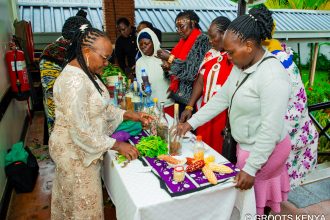UNICEF delivered over 43,000 doses of the R21/Matrix-M malaria vaccine by air to Bangui, Central African Republic, today, with more than 120,000 doses to follow in the next days. It is the first country to receive the R21 malaria vaccine for use in routine childhood immunization, marking another step forward in preventing the disease and saving children’s lives.
R21 is the second malaria vaccine to be recommended by WHO for children living in endemic areas. Along with the earlier WHO recommendation of the RTS,S vaccine, there is now sufficient vaccine supply to scale up malaria vaccination in Africa. The rollout of both vaccines is funded by Gavi, the Vaccine Alliance.
“With two products now available to countries, expanded supply of malaria vaccines is a game changer for child survival and health,” said Director of UNICEF Supply Division Leila Pakkala. “Previous concerns about supply meeting demand are firmly behind us. Now our priority is for the vaccines to reach every child at risk.”
The R21 and RTS,S vaccines are proven safe and effective in preventing malaria in children. The RTS,S vaccine was delivered to more than 2 million children in Ghana, Kenya, and Malawi in a four-year pilot programme that demonstrated a 13 per cent reduction in all-cause mortality.
Malaria is one of the world’s most lethal diseases, killing nearly half a million children under 5 years of age each year in Africa.
The Central African Republic has one of the highest rates of malaria incidence globally. In 2022, an estimated 1,733,000 malaria cases were reported in the country, averaging about 4,747 cases a day. The disease also claimed around 5,180 lives over the year, or 14 deaths each day.
“Having two safe and effective vaccines means we have greater supply security and can be more confident about meeting countries’ needs,” said Dr Sania Nishtar, CEO of Gavi, the Vaccine Alliance. “That is what matters most – that countries where our vaccines can be most impactful are able to access them, saving thousands of lives each year and offering relief to families, communities and entire health systems.”
Central African Republic, along with Chad, Cote d’Ivoire, Democratic Republic of Congo, Mozambique, Nigeria, South Sudan, and Uganda, are preparing to receive R21 shipments.
Around 4.33 million doses of RTS,S have been delivered to 8 countries so far – Benin, Burkina Faso, Cameroon, Ghana, Kenya, Liberia, Malawi, and Sierra Leone – that are offering the vaccine in their routine child immunization programmes as part of national malaria control plans. Burundi and Niger are next on the list for RTS,S shipments.
Vaccine deliveries to countries that are funded through the Vaccine Alliance depend on government requests and readiness to include the vaccine in routine immunization programmes.
Gavi, UNICEF, WHO, and partners are supporting governments as they prepare to receive and introduce the vaccines. This involves supporting countries to develop vaccine implementation plans and communication strategies, conducting health worker trainings and community engagement, and ensuring sufficient cold chain capacity.
“Malaria vaccines, introduced as part of the tools available in comprehensive national malaria control plans, will substantially reduce early childhood deaths and can help revitalize the fight against malaria. With the R21 vaccine now joining RTS,S vaccine for use in country immunization programmes, scale up of malaria vaccine across parts of Africa, where malaria remains a major cause of childhood death will continue. The high community demand for malaria vaccines also provides an opportunity for children to receive other childhood vaccines that may be due, resulting in even more lives saved,” said Dr Kate O’Brien, Director of WHO’s Department of Immunization, Vaccines and Biologicals.
Malaria vaccines are an important addition to the fight against the disease. Careful planning is essential to ensure the successful introduction of the malaria vaccines and to combine them with other interventions including insecticide-treated bed nets or targeted indoor residual spraying, chemo-prevention, diagnosis and prompt treatments to maximize the impact on public health.




